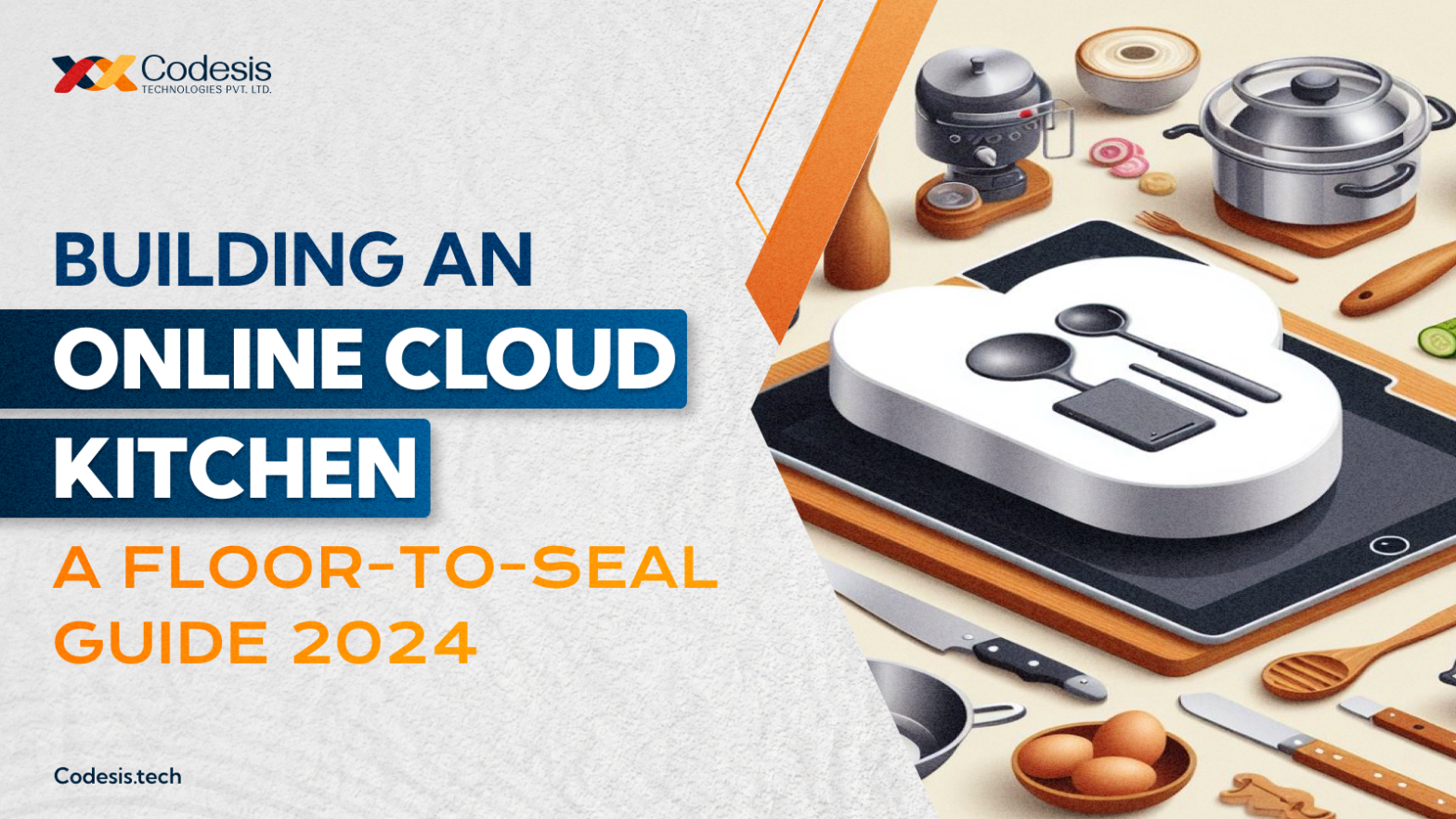Building An Online Cloud Kitchen: A Floor-To-Seal Guide 2024 Scroll Down to Read Introduction With the growing demand and popularity of cloud platforms, the food and restaurant industry is undergoing digital transformation to the cloud kitchen. The preference for online food delivery services has been gaining popularity at a tremendous rate. In 2022, the global market value of online food delivery services was calculated at $128.32 billion and is expected to grow to $159.46 billion by 2027. Moreover, with an increase in the use of smartphones and easy access to the internet, the new generation seeks a convenient lifestyle. These factors resulted in the growth and demand for facilities like cloud kitchens or ghost kitchens. According to Research And Markets’ Cloud Kitchen Market report, the global market value of cloud kitchens stood at US$ 63.9 Billion in 2022. The Russia-Ukraine war: at least in the short to medium term, impacted global economic recovery from the COVID-19 epidemic. The conflict between these two countries has resulted in economic sanctions against several countries, a rise in commodity prices, and supply chain disruptions, resulting in inflation across goods and services and hurting numerous markets throughout the world. While the market value for the same is projected at $125.5 billion by the year 2028. This means the cloud kitchen market is expected to grow at a CAGR of 11.91% from 2022 to 2028. As a result, many restaurants and diners are expressing a shift from their traditional dine-in facility to a cloud-based delivery-only service. Several cloud kitchen startups are emerging to tap into this new, promising, and highly scalable F&B market. However, you’ll need to consider the type of business model, and adhere to certain guidelines, and prerequisites to build a successful online cloud kitchen. But before that let’s take a look at cloud kitchen meaning. Table of Contents Introduction What is Cloud Kitchen? How does a cloud kitchen work? Types of cloud kitchen business models. How to start a cloud kitchen? Benefits of starting a Cloud Kitchen. Codesis Bottomline: Online Cloud Kitchens are shaping the future of Restaurants. Conclusion What is Cloud Kitchen? Cloud Kitchen, also known as Ghost Kitchen, Virtual Kitchen, Home Kitchen or Dark Kitchen, is shaping the restaurant industry with its new format. A Cloud Kitchen is a restaurant that delivers food or allows takeout and does not offer traditional dine-in facilities. They accept orders via their website, app, or various food delivery platforms. Due to their no-dine-in features, existing restaurants can be easily transformed into cloud kitchens with minimum or zero cost. Many people are turning to cloud kitchens to take advantage of their scalable possibilities and experimental spaces. Another appealing fact about cloud kitchens is that more than one restaurant brand can operate under the same roof. For example, a multi-brand cloud kitchen allows an Indian-food restaurant owner to run another restaurant from the same establishment. How does a cloud kitchen work? A cloud kitchen generates its revenue in a similar way to traditional restaurants i.e. by selling food. The main difference lies in their operating procedure. Based on a delivery-only format, cloud kitchens solely rely on online orders placed via their websites, apps, and other delivery platforms. Due to this reason, the cloud kitchen concept is considered effortless by most. The Cloud Kitchen also take orders from offline customers only for take-away Generally, most cloud kitchens use Point-of-sale (POS) software to manage their virtual kitchen, accept orders, and process deliveries. For multi-brand cloud kitchens, the POS software is integrated with third-party food aggregators to process and analyze orders in bulk quantity. The POS system notifies the specific kitchen based on the order details. It also updates the order status by notifying the customers and assigning delivery agents, making operations efficient and seamless. Types of cloud kitchen business models The main objective of every cloud kitchen is the same, to deliver food ordered online. However, there is a difference in how these processes are executed. Based on the type of execution, cloud kitchens can be divided into several business models. Standalone Ghost Kitchen or Dark Kitchen These are commercial kitchens owned by a single restaurant. The restaurant owner is responsible for providing kitchen equipment, staff, delivery, and marketing. A standalone kitchen generally specializes in one or two cuisines and has fewer items on its menu. Therefore, standalone kitchens have a small workstation, generally an average of 300 square feet. Most of the time, standalone kitchens rely on third-party food delivery platforms for operation. Multi-brand Kitchen or Co-Working Cloud Kitchen The flexibility of a cloud kitchen business model allows its owners to facilitate more than one restaurant under its roof. A multi-brand cloud kitchen opens opportunities for business expansion by facilitating restaurants specializing in different types of cuisines. Thus attending to a wide range of customers. Their kitchen workspace is comparatively larger than standalone cloud kitchens. Example – Curefoods, a cloud kitchen startup in Bangalore. Virtual Restaurants These type of restaurants exists only in the virtual world. They develop brands and menus by analyzing data and studying local demand. Although they utilize an existing restaurant to carry out their operations, virtual restaurants provide a completely different menu from the existing restaurant. As a result, virtual restaurants are a great way to experiment with new dishes and ideas. Example – Canada-based cloud kitchen operator, JustKitchen has signed a royalty-based agreement with an Indian company to provide virtual kitchen services. Kitchen as a Service (KaaS) The name speaks for itself, Kitchen as a Service are cloud kitchen offering small restaurants with kitchen equipment and a chef crew. They prepare food for other restaurants and brands while the businesses oversee marketing, sales, and delivery. Example – RestoLabs Hub and Spoke A Hub and Spoke cloud kitchen is a central kitchen that prepares the food partially cooked. It is then shipped to outlets for their final touch before sending… Continue reading Building An Online Cloud Kitchen: A Floor-To-Seal Guide 2024
Building An Online Cloud Kitchen: A Floor-To-Seal Guide 2024
